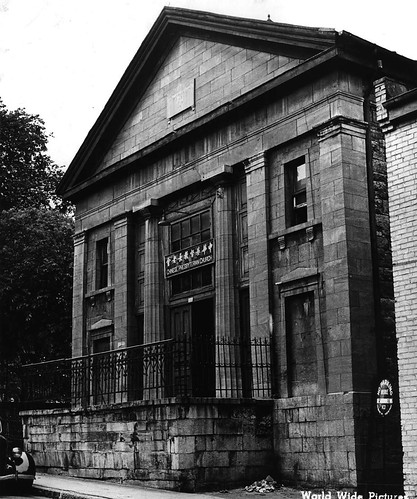
Today, my friend Chris DeWolf wrote an article in the Gazette about Montreal Chinatown’s Jewish past:
If Chinatown’s Jewish heritage isn’t obvious, it’s probably because it has been erased by time and redevelopment, swept away like Chenneville St. and its quietly imposing synagogue.
(…)
Located on a small street (now shortened and written as Cheneville) between St. Urbain and Jeanne Mance Sts., below Dorchester (now René Lévesque) Blvd. and above Craig (now St. Antoine) St., it was built in 1838 by Montreal’s oldest Jewish congregation, Shearith Israel.
In 1887, when Shearith Israel moved to a much larger home on Stanley St. – following the westward migration of Montreal’s older generations of Canadian-born, anglicized Jews – the synagogue was rented by Beth David, a congregation of Romanian immigrants who arrived in the late 19th century, part of a huge wave of Jewish immigrants from eastern Europe. Over the next three decades, the area around present-day Chinatown – with Bleury St. to the west, Sanguinet St. to the east, Craig to the south and Ontario St. to the north – became the heart of Jewish Montreal, a haven for Yiddish-speaking immigrants who established businesses, synagogues and many of the Jewish institutions that still exist.
Israel Medresh, a journalist for the Kanader Adler, a Yiddish-language daily newspaper, sketched a portrait of the neighbourhood in his 1947 book Montreal Foun Nekhtn, translated into English in 2000 as Montreal of Yesterday.
“The corner of St. Urbain and Dorchester was the very heart of the Jewish neighbourhood,” he wrote. “Nearby was Dufferin Park, then a ‘Jewish park’ where Jewish immigrants went to breathe the fresh air, meet their landslayt (compatriots), hear the latest news, look for work and read the newspapers.”
Just a few blocks from Dufferin Park stood seven synagogues, the first Young Men’s Hebrew Association and a number of important community and political organizations like the Baron de Hirsch Institute, the Hebrew Benevolent Society and the Jewish Labour Temple.
